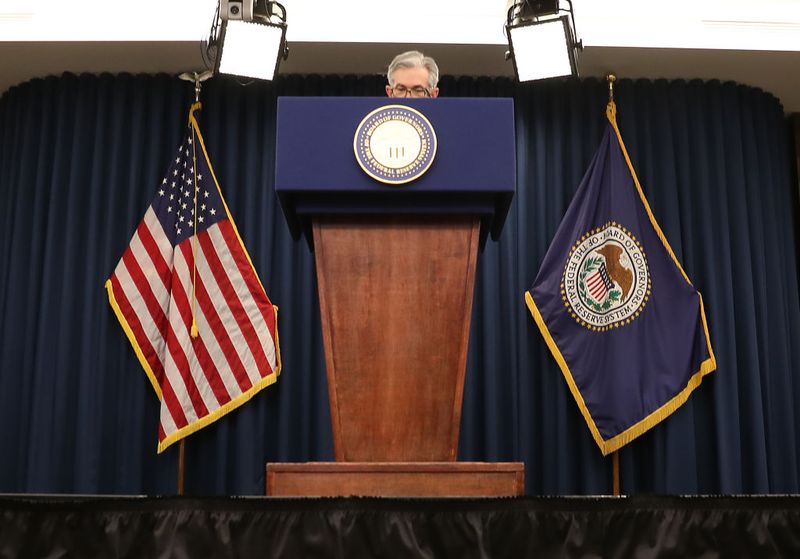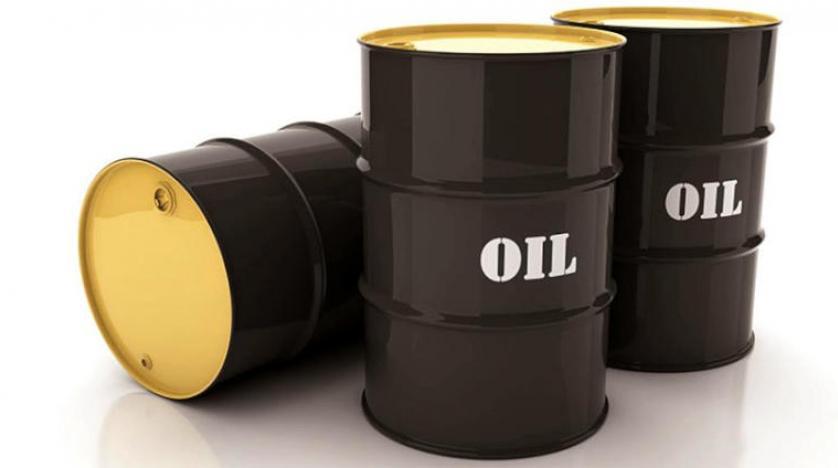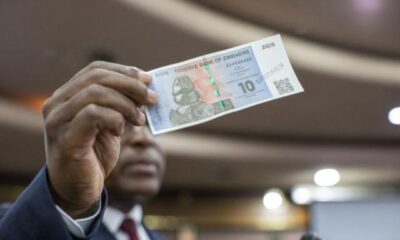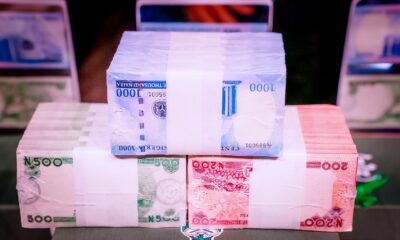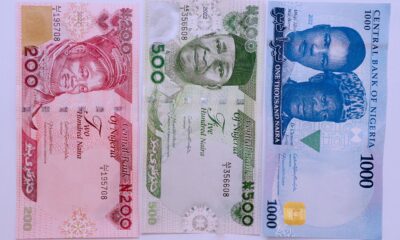Federal Reserve Chairman Powell stopped an intraday equity rally in its tracks overnight, after he signalled a 0.50% rate hike in May and that he was not unamenable to “front-loading” more 0.50% rate hikes. Mr Powel cited a tight labour market and inflation at multi-decade highs. Fellow President Mary Daly also suggested 0.50% hikes, while the bull in the monetary China shop, James Bullard, reiterated his enthusiasm for 0.75% hikes.
The sell-off of the US Dollar the previous day abruptly reversed course in the major currency space. Notably, it never really had downside momentum in the EM space. US yields also finished the day earlier with the 5-year to 30-year tenor moving into inversion. The prospect of even faster more aggressive rate hikes, and whether the Fed can achieve a soft landing, was enough to sharply reverse equity markets, sending them to a sharply lower finish. That is already spilling over into Asian equity markets today.
In China, the Yuan sell-off is threatening to become somewhat of a rout in relative terms as it tumbled again overnight. A neutral USD/CNY fixing by the PBOC this morning will settle the ship for now, but the price action this week suggests that foreign money leaving the China equity and bond markets is in danger of becoming a flood. That isn’t being helped by the PBOC seemingly looking to weaken the Yuan anyway, potentially a poor man’s path to supporting the manufacturing sector whilst allowing it to maintain neutral monetary policy at home.
With the Shanghai lockdown dragging on, and fears ever-mounting that China’s Covid-zero policy will torpedo 2022 growth, President Xi Jinping disappointed markets yesterday by reiterating his support for the policy in a speech at the Baoa Forum. Similarly, the head of the Peoples Bank Of China today, said the bank would concentrate on targeted support for small businesses and those impacted by Covid-19. That continues a recent trend of talking up support intentions from officials but failing to deliver on a scale the market is looking for. All we have is a 0.25% RRR cut, while the 1-year MTR and 1 and 5-year LPRs have been left unchanged. Until markets see the colour of China’s money, China equities will remain challenged and 6.5000 looks set to arrive for USD/CNY much sooner than I expected.
Australian Preliminary Manufacturing and Services PMIs for April held steady in expansion territory today at 56.6 and 56.2. Fears of a slowdown in China have not impacted Australia at all thus far, as the Russia/Ukraine war lifts global demand for everything that is pumps, digs or grows out of the ground. The swing in sentiment to negative overnight has left AUD/USD dangerously close to technical support though, and with an RBA stubbornly pushing back on inflation chasing rate hikes, the US/Australia rate differential may start to weigh on the currency in the weeks ahead.
Japan’s Jibun Bank March Manufacturing and Services PMIs clung to expansionary territory, coming in at 53.4 and 50.5 respectively, a steady result from last month. More attention was focused on Inflation and Core-Inflation for March. Headline Inflation jumped (I say that relatively because it’s Japan) to 1.20% thanks to rising fresh vegetable prices. Core Inflation which has no vegetables, but does include energy, was benign, rising just 0.80%. None of that will sway the Bank of Japan at next week’s policy meeting, which makes sense given its intervention to cap 10-year JGB yields at 0.25% this week. With the US yield curve still marching higher, and the BOJ maintaining multi-decade low rates, 130.00 in USD/JPY is going to arrive sooner, rather than later.
The United Kingdom could well be back in the headlines again in the coming week thanks to a word I hoped I would never have to say again, Brexit. Firstly, I note the UK GFK Consumer Confidence released this morning plummeted to -38, thanks to the war in Eastern Europe and soaring inflation. Add into that mix now, the regional Northern Ireland elections on May 5th. Due to the nightmarish nuances of Northern Irish politics, an increasing number of stories are now circulating that the British Government may unilaterally change the Brexit agreement.
Why you would do that when both it and Europe are fighting a proxy military and economic war in the East, I do not know. Maybe it was one too many wines at the infamous No.10 garden parties. Whichever way you look at it, it won’t be good for Sterling. Notably, GBP/USD’s price action has been underwhelming at best in April, and its recovery rally halted right at its two-month resistance line around 1.3090 overnight. A soft set of UK Retail Sales data this afternoon could see support at 1.2975 aggressively tested. On a happier note, Happy 96th Birthday Your Majesty.
Turning to Europe, President Macron of France has widened his lead over challenger Marine Le Pen ahead of this weekend’s presidential runoff. That has eased fears of a regime change that would shake Europe’s foundations. Options volatility on Euro for Monday has fallen back sharply. Euro still retreated in the face of a US yield pumped US Dollar overnight, and German, France and Eurozone PMIs all have downside risk when released this afternoon. That combined with an increasing amount of noise that Germany may be nearing a decision to ban Russian natural gas imports should limit any gains by the single currency or European equities, especially with the weekend also upon us. We’ll talk more about the latter next week, but my initial thoughts are that EUR/USD would start with a 0.9, and not a 1.0.
The pre-FOMC Fed speaker blackout starts tomorrow (Saturday), and it looks like they are thin on the ground today. That just leaves US PMIs as the main ppint of interest tonight data-wise. A high print should keep the hiking noise going, while a low print could bring some relief to bond and equity markets into the weekend.
Asian equities tumble on Wall Street rout.
The incipient recovery rally on Wall Street overnight ran into a brick wall of Fed speakers, notably Jerome Powell who was very hawkish. That sent Wall Street tumbling to a negative close as US yields shot higher, notably at the short end. The S&P 500 fell by 1.47%, the Nasdaq slumped by 2.07%, and the Dow Jones fell by 1.02% as concerns mount about whether the Fed will send the US into a hard or soft landing. US futures have continued south in Asia, the S&P 500, Nasdaq and Dow futures are around 0.45% lower.
That has spilt over into Asian markets, already nervous about a deeper slowdown in China. The Nikkei 225 has slumped by 2.0%, with South Korea’s Kospi falling by 1.15%, and Taipei losing 1.0%. Mainland China stocks are lower, but showing some resilience, making me think that China’s “national team” are doing some pre-weekend “smoothing. A lower Yuan may also be supporting exporters. The Shanghai Composite has fallen by 0.45%, while the CSI 300 is down just 0.25%. However, the Hang Seng has lost 1.0% as President Xi emphasised digital security in his speech yesterday.
Across regional markets, Singapore, Jakarta, and Manila are down just 0.20%, while Kuala Lumpur is unchanged, Bangkok has lost 0.55%. Again, weaker currencies may be supporting local markets. Australian markets have taken fright at the losses on Wall Street overnight, falling heavily. The ASX 200 and All Ordinaries have slumped by 1.50%.
The price action in Asia, combined with a low appetite for risk over the weekend, is likely to see European equities fall heavily at the open this afternoon. Political risks in France and Britain will e another headwind and fears of widening European energy sanctions on Russia will limit any gains.
Powell lifts the US Dollar.
A hawkish Jerome Powell overnight lifted US yields higher and saw a flight to safety in the US Dollar, allowing the dollar index to recapture much of its mid-week losses. Another night of Yuan losses also encouraged some pre-weekend defensive flows into the greenback. The dollar index fell below 100.00 earlier in the session, by reversed and rallied to finish 0.30% higher at 100.63 where it remains in Asia today. Support now lies at 99.80 and then between 99.40 and 99.55, while initial resistance remains in the 101.00 area.
Euro and Sterling both staged sharp intra-day recovery rallies overnight, with EUR/USD topping out ahead of 1.0950 resistance. Jerome Powell’s hawkish comments torpedoed the respective rallies and saw both currencies slump to small intraday losses. EUR/USD closed 0.22% lower at 1.0830, and GBP/USD finished 0.33% lower at 1.3025.
Both are steady in Asia. Aside from yield differential risks capping gains, both the Euro and Sterling face political risks now. Widening energy sanctions by Europe, and Brexit agreement challenges by Britain, and should cap any gains into the weekend. EUR/USD still risks a close below 1.0800 on a weekly basis which would be a very negative technical development. Only a close above 1.0950 eases that risk. Likewise, GBP/USD failed ahead of resistance at 1.3100 and could retest support at 1.2975.
USD/JPY rose 0.39% to 128.38 overnight as US yields climbed once again. In Asia, it is holding steady at 128.45. The still-overbought RSI means another correction lower is still not out of the question. But a dovish BOJ, combined with China spill-over effects means USD/JPY remain heavily skewed higher. Support remains at 127.00 and 126.00, with resistance at 129.50 and 130.00.
The sentiment-sensitive Australian and New Zealand Dollars both tumbled by 1.10% overnight, unwinding all the previous day’s gains. China concerns seem to be weighing heavily today as AUD/USD falls 0.30% to 0.7345, and NZD/USD slumps by 0.45% to 0.6702. AUD/USD trendline support is very close at 0.7335 today, and a daily close below will signal deeper losses to 0.7200 initially. NZD/USD remains in a technical bear market well below its breakout line at 0.6840. Failure of 0.6700 signals deeper losses below 0.6600 initially.
Onshore and offshore Chinese Yuan fell heavily again overnight, with the offshore CNH coming under particular pressure as international investors used it as a proxy for China’s growth concerns. USD/CNY rose 0.50% to 6.4500 overnight, gaining another 0.30% to 6.4700 in Asia, despite a neutral PBOC fixing. USD/CNH rose 0.53% to 6.4800, testing 6.5000 today before settling 0.20% higher at 6.4930. A rise above 6.5000 seems likely to happen sooner, with the PBOC seemingly happy to let the Yuan fall, boosting China exporters in a backdoor stimulus move.
The sharp fall by the Yuan again overnight heaped more pressure on regional Asian currencies, now facing headwinds from China slowdown fears, a weaker Yuan, and rising US interest rates. USD/KRW rose 0.70% overnight, gaining another 0.10% to 1243.10 today. USD/TWD has risen to resistance at 29.310 again with the price action suggesting the central bank might be around. has risen by 0.30%, USD/SGD and USD/IDR are steady, but USD/THB is edging towards 34.000 once again. The grim week for the Malaysian Ringgit continues as well, having lost over 1.50% this week. USD/MYR has gapped higher in Asia, rising 0.37% to 4.3050. I cannot see any particular reason why the Malaysian Ringgit is being singled out, but the technical picture suggests we will see 4.3500 soon. The travails of Asia FX this week are a theme I expect to continue for months to come.
Oil markets are surprisingly quiet.
Oil markets, by their standards, have been surprisingly quiet for the past few sessions, consolidating after hefty losses earlier in the week. At this stage, fears over China’s growth and overtightening by the Fed capping US growth seem to be balancing out concerns that Europe will soon widen sanctions on Russian energy imports.
Brent and WTI rose by around 1.40% overnight in directionless trading, but have given those gains back today in Asia, making for plenty of noise, but very little substance. Brent crude is 1.35% lower today at $107.25, and WTI is 1.20% lower at 102.75 a barrel. News that Japan will tender 4.5 million barrels out of its reserves in May seems to have been the excuse for Asia to push prices lower intraday. In the bigger picture, the amounts involved are immaterial.
I continue to expect that Brent will remain in a choppy $100.00 to $120.00 range, with WTI in a $95.00 to $115.00 range. Brent crude has further support at $96.00, and WTI at $93.00 a barrel. A potential European oil embargo on Russia next week after this weekend’s French elections, could see a move towards the top of the range.
What is gold telling markets?
Gold continues to confuse me. Overnight it retreated intraday to test support at $1940.00 an ounce, but as US yields and the US Dollar rallied, it also reclaimed its intraday losses, finishing just 0.30% lower at $1951.50 an ounce. It is unchanged in Asia. Either gold markets are walking into a huge bullish trap as the US Dollar and US yields continue to power higher, or gold markets are warning us that inflation is more entrenched than expected, or that the world is much more dangerous than markets are believing. Any of these scenarios could prove correct.
That said, from a technical perspective, gold still looks vulnerable to a failure of the $1940.00 support which could see more speculative long positions getting culled. Gold would potentially target $1915.00 an ounce and then critical support at $1880.00. Those nagging concerns I have expressed mean a decent washout in prices could be an opportunity to load up again at far better levels.
On the topside, gold has resistance at $1980.00 and $2000.00 an ounce. I believe option-related selling at $2000.00 will be a strong barrier. However, if $2000.00 fails, gold could quickly gap higher to $2020.00, and potentially, retest of $2080.00 an ounce.

